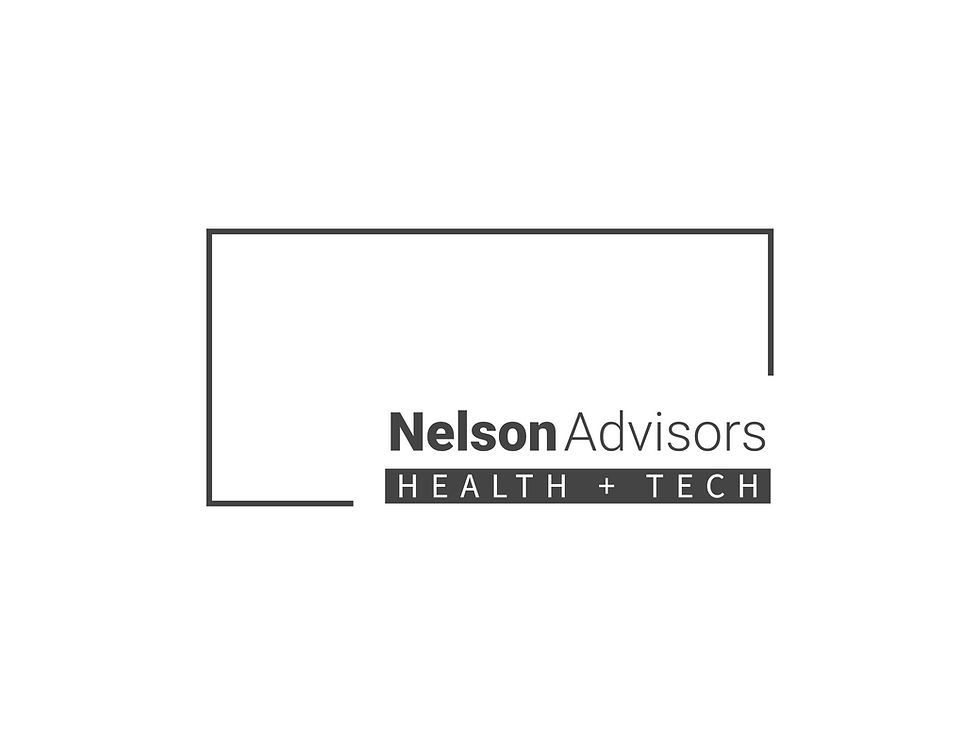Amazon One Medical: the beginning of a text-based TeleHealth revolution?
- Lloyd Price
- Dec 21, 2024
- 6 min read

Exec Summary:
Amazon One Medical is a healthcare service that offers a combination of in-person primary care and virtual care options.It aims to provide convenient and accessible healthcare to its members.
Amazon One Medical offers text-based appointments which are highly efficient because they are asynchronous and allow for a high level of automation, saving costly healthcare resources. Typically, this approach can meet up to 20% of primary care demand.
Amazon One Medical could be the beginning of a text-based TeleHealth revolution and here's why:
Focus on Messaging: Amazon One Medical emphasises text-based communication with healthcare providers, making it more accessible and convenient for patients.
Pay-Per-Visit Model: The pay-per-visit structure removes the barrier of membership fees, potentially attracting a wider range of users.
Integration with One Medical: Combining telehealth with in-person primary care services offers a comprehensive healthcare experience.
Amazon's Reach: Leveraging Amazon's vast customer base and technological resources could significantly expand the reach of text-based telehealth.
However, there are also potential challenges:
Limited Scope: The current focus on 30 common conditions may not address complex or chronic health issues.
Regulatory Hurdles: Expanding text-based care may require navigating regulatory frameworks.
Competition: The telehealth market is already crowded, with established players and new entrants vying for market share.
Ultimately, the success of Amazon One Medical will depend on its ability to address these challenges and provide a high-quality, accessible, and effective text-based telehealth experience.
Nelson Advisors work with Healthcare Technology Founders, Owners and Investors to assess whether they should 'Build, Buy, Partner or Sell' in order to maximise shareholder value.
Healthcare Technology Thought Leadership from Nelson Advisors – Market Insights, Analysis & Predictions. Visit https://www.healthcare.digital
HealthTech Corporate Development - Buy Side, Sell Side, Growth & Strategy services for Founders, Owners and Investors. Email lloyd@nelsonadvisors.co.uk
HealthTech M&A Newsletter from Nelson Advisors - HealthTech, Health IT, Digital Health Insights and Analysis. Subscribe Today! https://lnkd.in/e5hTp_xb
HealthTech Corporate Development and M&A - Buy Side, Sell Side, Growth & Strategy services for companies in Europe, Middle East and Africa. Visit www.nelsonadvisors.co.uk

Text-based TeleHealth
Text-based telehealth, also known as text-based virtual care, is a type of healthcare service that allows patients to communicate with healthcare providers through text messaging. This can include a variety of services, such as:
Asynchronous care: Patients send messages to providers at their convenience, and providers respond when they have time. This is useful for non-urgent issues or follow-up questions.
Synchronous care: Patients and providers communicate in real-time through text messages. This is similar to instant messaging and can be used for urgent care or quick consultations.
Remote patient monitoring: Patients can use text messages to send health data, such as blood pressure readings or glucose levels, to their providers. This allows providers to monitor patients' health remotely and make adjustments to their care plans as needed.
Benefits of text-based telehealth:
Convenience: Patients can access care from anywhere at any time, without having to travel to a doctor's office.
Accessibility: Text-based telehealth can be more accessible to patients who have difficulty traveling or who live in rural areas.
Affordability: Text-based telehealth can be more affordable than traditional in-person care.
Improved communication: Text-based communication can be a more efficient way for patients and providers to communicate, especially for non-urgent issues.
Limitations of text-based telehealth:
Limited scope: Text-based telehealth is best suited for non-urgent or routine care. It may not be appropriate for complex or emergency situations.
Potential for miscommunication: Text-based communication can be more prone to miscommunication than face-to-face or video communication.
Privacy concerns: Patients may have concerns about the privacy of their health information when communicating through text messages.
Overall, text-based telehealth is a promising new technology that has the potential to improve access to healthcare for many people. However, it is important to be aware of the limitations of this technology and to use it appropriately.
In addition to Amazon One Medical, other text-based telehealth service providers are also leading the text-based TeleHealth revolution.
Text2MD: This service allows patients to connect with doctors via text for urgent care, primary care, or medication refills.
CirrusMD: CirrusMD connects patients with board-certified physicians via text for a variety of health concerns.
Text-based telehealth is still a relatively new technology, but it is rapidly evolving. As more and more healthcare providers adopt this technology, we can expect to see even more innovative and effective ways to use text messaging to deliver healthcare.

NHS text-based telehealth
The NHS is increasingly utilising text-based telehealth services to improve patient care and access. Here's a look at how it's being implemented:
AccuRx: This is a widely used platform that enables text messaging and video consultations within the NHS. It allows clinicians to send patients text messages, including links to video consultations. Patients can also respond to messages with text or images.
Connect Me: This platform facilitates remote patient monitoring, allowing patients to send health data, such as blood pressure readings, to their healthcare providers via text messages.
Florence: This system uses targeted text messaging to engage patients in their healthcare management, such as reminding them of appointments or providing educational information.
Key Uses of Text-Based Telehealth in the NHS:
Remote Patient Monitoring: Tracking chronic conditions like diabetes or heart disease.
Medication Adherence: Reminding patients to take medications and addressing any concerns.
Symptom Management: Assisting patients in managing symptoms and seeking appropriate care.
Mental Health Support: Providing basic mental health support and resources.
Pre-operative and Post-operative Care: Communicating with patients before and after procedures.
Benefits of Text-Based Telehealth in the NHS:
Improved Patient Engagement: Increased communication and support can lead to better health outcomes.
Enhanced Access to Care: Particularly beneficial for patients in remote areas or with limited mobility.
Efficient Resource Utilisation: Streamlining communication can free up valuable time for healthcare professionals.
Cost-Effectiveness: Potentially reducing the need for in-person appointments and hospital admissions.
Challenges and Considerations:
Data Security and Privacy: Ensuring patient confidentiality and data security is paramount.
Digital Equity: Addressing potential disparities in access to technology and digital literacy.
Clinical Appropriateness: Determining which types of care are suitable for text-based delivery.
Regulatory Compliance: Adhering to relevant regulations and guidelines for telehealth services.
Overall, text-based telehealth is playing an increasingly important role in the NHS, offering the potential to improve patient care, enhance access, and improve efficiency. As technology continues to evolve, we can expect to see even more innovative ways to leverage text-based communication for healthcare delivery within the NHS.

Delivering the text-based telehealth revolution in the next two years
The next two years are poised to witness a significant acceleration of the text-based telehealth revolution, driven by several key factors:
Technological Advancements:
AI-Powered Chatbots: Expect a surge in sophisticated AI-powered chatbots capable of handling a wider range of medical inquiries, providing initial assessments, and even offering basic triaging.
Enhanced Security and Privacy: Robust encryption and data protection measures will further bolster patient trust and confidence in text-based platforms.
Integration with Wearables: Seamless integration with wearable devices will enable real-time data exchange and personalised health monitoring via text-based interactions.
Expanding Scope of Care:
Chronic Disease Management: Text-based platforms will play a pivotal role in managing chronic conditions like diabetes, hypertension, and mental health disorders, facilitating regular check-ins, medication reminders, and personalised guidance.
Preventive Care: Text-based interventions will be increasingly used for preventive care initiatives, such as smoking cessation programs, weight management support, and immunization reminders.
Mental Health Support: Text-based therapies, including cognitive behavioural therapy (CBT) and mindfulness exercises, will gain wider acceptance as effective and accessible mental health interventions.
Regulatory and Reimbursement Landscape:
Evolving Regulations: Clearer regulatory frameworks will facilitate wider adoption and innovation in text-based telehealth, ensuring patient safety and quality of care.
Reimbursement Models: Expanding reimbursement models will incentivise healthcare providers to adopt text-based platforms, making these services more financially sustainable.
Patient and Provider Acceptance:
Growing Demand: Increasing patient demand for convenient and accessible healthcare options will drive further adoption of text-based platforms.
Provider Training: Widespread training programs will equip healthcare providers with the necessary skills and knowledge to effectively utilise text-based platforms.
Challenges and Considerations:
Data Privacy and Security: Maintaining robust data protection measures and ensuring patient confidentiality will remain paramount.
Digital Divide: Bridging the digital divide and ensuring equitable access to text-based services for all populations will be crucial.
Clinical Appropriateness: Careful consideration must be given to the appropriate scope of care for text-based platforms, ensuring patient safety and optimal clinical outcomes.
Interoperability: Seamless integration of text-based platforms with existing electronic health records (EHRs) will be essential for efficient data exchange and care coordination.
In conclusion, the next two years promise a transformative era for text-based telehealth. By addressing the challenges and capitalising on the opportunities, we can unlock the full potential of this technology to revolutionise healthcare access, improve patient outcomes, and enhance the overall quality of care.
Nelson Advisors work with Healthcare Technology Founders, Owners and Investors to assess whether they should 'Build, Buy, Partner or Sell' in order to maximise shareholder value.
Healthcare Technology Thought Leadership from Nelson Advisors – Market Insights, Analysis & Predictions. Visit https://www.healthcare.digital
HealthTech Corporate Development - Buy Side, Sell Side, Growth & Strategy services for Founders, Owners and Investors. Email lloyd@nelsonadvisors.co.uk
HealthTech M&A Newsletter from Nelson Advisors - HealthTech, Health IT, Digital Health Insights and Analysis. Subscribe Today! https://lnkd.in/e5hTp_xb
HealthTech Corporate Development and M&A - Buy Side, Sell Side, Growth & Strategy services for companies in Europe, Middle East and Africa. Visit www.nelsonadvisors.co.uk





















































Comments